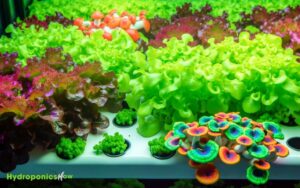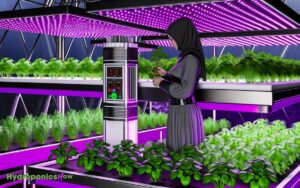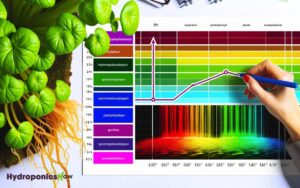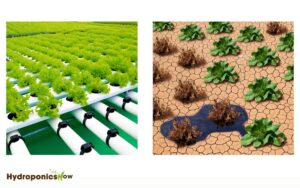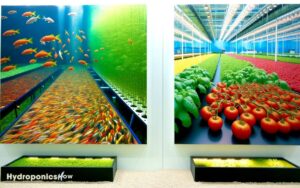What Is the Fastest Growing Plant in Hydroponics: Explained
Watercress (Nasturtium officinale) is recognized as the fastest growing plant in hydroponics, doubling its biomass within just 3 to 5 days under ideal conditions. This remarkable growth rate results from efficient nutrient uptake and rapid cell division.
It thrives in nutrient solutions with a pH between 6.5 and 7.5, and requires 12-16 hours of light daily. Water temperature maintenance between 10°C and 20°C is also critical.
Understanding these detailed growth metrics and environmental requirements can greatly enhance productivity and resource efficiency in hydroponic systems. For more insights into optimizing these conditions, consider exploring further.
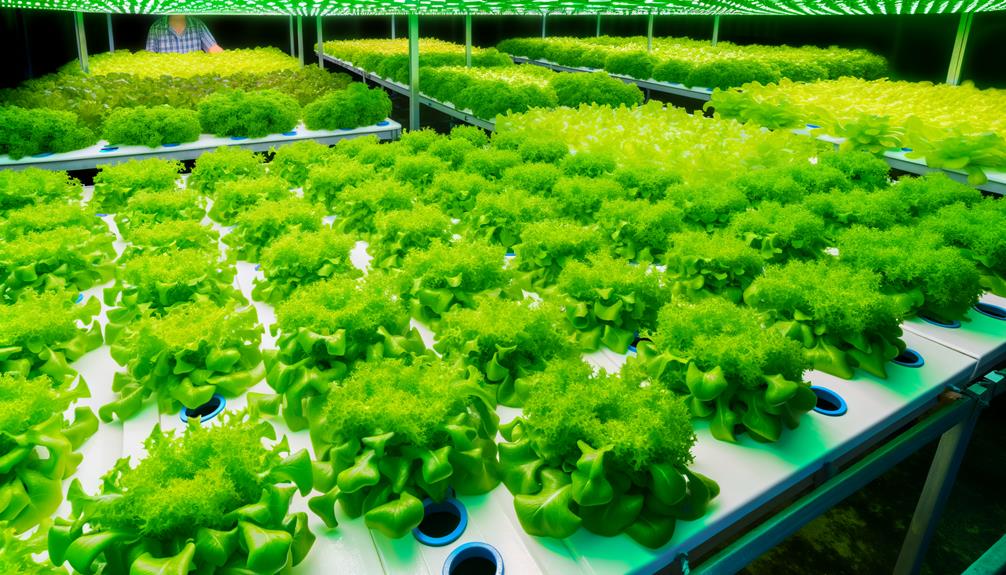
Key Takeaways
- Watercress (Nasturtium officinale) is the fastest growing plant in hydroponics, doubling its biomass in 3 to 5 days.
- Watercress thrives with a nutrient-rich solution and optimal pH levels between 6.5 and 7.5.
- Consistent light exposure of 12-16 hours daily at PPFD of 200-400 µmol/m²/s maximizes watercress growth.
- Maintaining water temperatures between 10 to 20°C is essential for rapid watercress development.
Top Fastest Growing Plants in Hydroponics for Quick Harvest
| Plant | Growth Speed | Ideal Harvest Time | Hydroponic System | Notes |
|---|---|---|---|---|
| Lettuce | 3-4 weeks | 3-4 weeks | Deep Water Culture (DWC) | Thrives in hydroponics, one of the fastest crops to mature. |
| Spinach | 4-5 weeks | 4-5 weeks | Nutrient Film Technique | Grows quickly, ideal for leafy green production in compact systems. |
| Kale | 4-6 weeks | 4-6 weeks | Kratky Method | A fast-growing, nutrient-dense leafy green popular in hydroponics. |
| Basil | 3-4 weeks | 3-4 weeks | Deep Water Culture (DWC) | Grows quickly in hydroponics and is ideal for continuous harvest. |
| Cilantro | 4-5 weeks | 4-5 weeks | Ebb and Flow | Fast-growing herb that thrives in hydroponic systems, perfect for fresh use. |
| Radishes | 3-4 weeks | 3-4 weeks | Nutrient Film Technique | Quick root vegetable, suitable for small hydroponic spaces. |
| Arugula | 3 weeks | 3 weeks | Kratky Method | Fastest leafy green, perfect for hydroponic setups with frequent harvests. |
Importance of Growth Speed
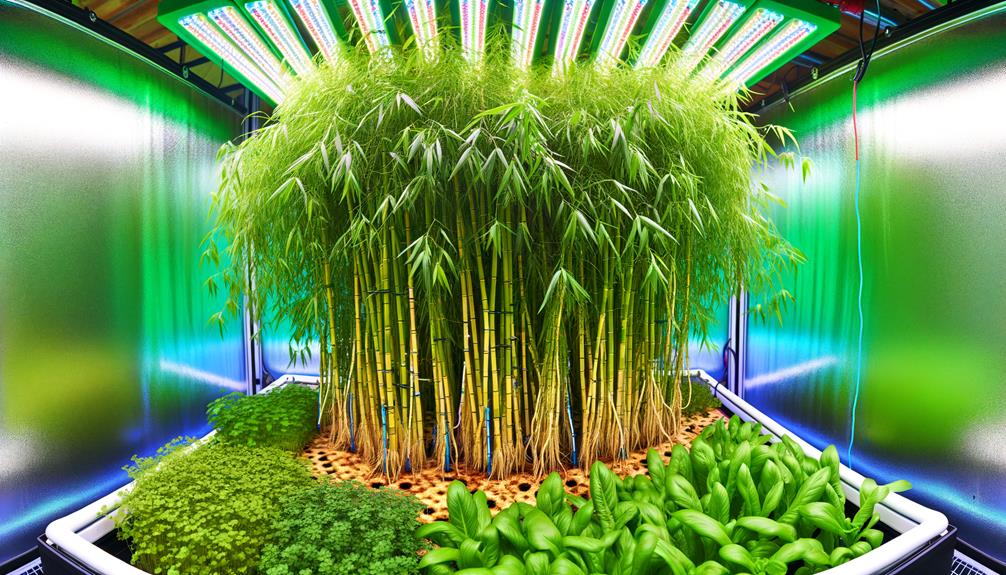
The growth speed of plants in hydroponic systems is a critical factor influencing overall yield, resource efficiency, and economic viability.
Measured in relation to biomass accumulation per unit time, rapid growth is advantageous for maximizing output in controlled environments. For instance, plants that exhibit expedited growth cycles can achieve multiple harvests annually, enhancing productivity metrics.
Faster growth rates also correlate with improved nutrient uptake efficiency, reducing resource wastage.
Additionally, economic analyses reveal that shortened growth periods decrease operational costs, such as energy and labor, thereby improving profit margins.
Quantitative metrics, including relative growth rate (RGR) and net assimilation rate (NAR), are essential for evaluating plant performance in hydroponic settings, guiding optimization strategies for commercial and research applications.
Hydroponic Growth Factors
Several key factors influence the growth rate of plants in hydroponic systems, including light intensity, nutrient concentration, pH levels, and temperature.
Ideal light intensity, typically measured in micromoles per square meter per second (µmol/m²/s), guarantees maximum photosynthesis.
Nutrient solutions must be rich in essential elements such as nitrogen, phosphorus, and potassium, with ideal electrical conductivity (EC) between 1.2 and 2.0 mS/cm.
Maintaining pH levels between 5.5 and 6.5 is vital for nutrient uptake efficiency.
Temperature regulation, ideally between 65°F and 80°F (18°C to 27°C), promotes enzymatic activities and metabolic rates.
These factors collectively create an environment conducive to rapid and healthy plant growth, demonstrating the precise requirements for enhancing hydroponic agricultural practices.
Top Contenders for Fast Growth
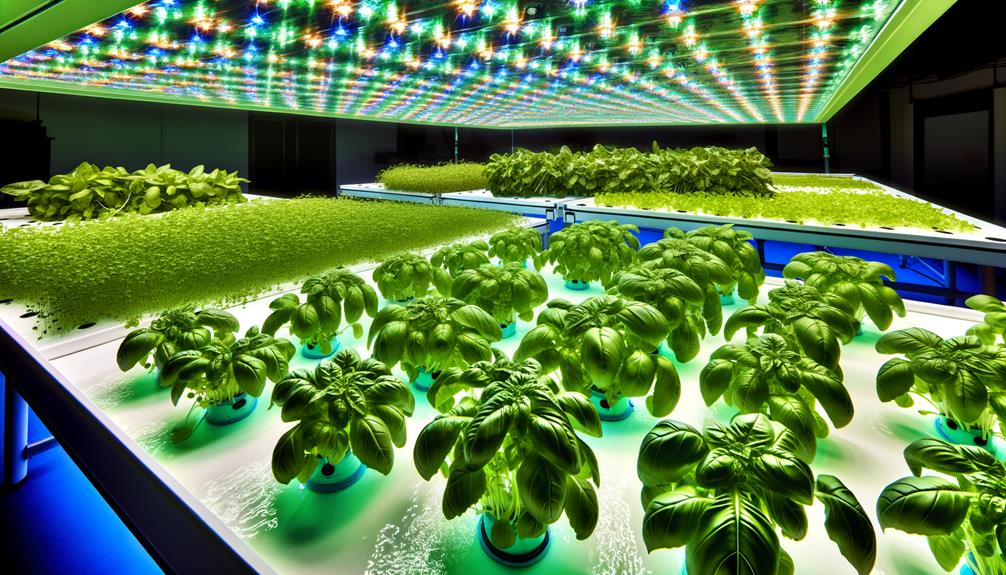
Among the most rapidly growing plants in hydroponic systems, leafy greens such as lettuce (Lactuca sativa) and spinach (Spinacia oleracea) stand out due to their capacity to reach harvest maturity within 30 to 45 days.
These species exhibit accelerated growth rates facilitated by favorable hydroponic conditions, including precise nutrient delivery and controlled environmental parameters.
Lettuce, for instance, can achieve a growth rate of up to 1 inch per day under ideal conditions. Similarly, spinach demonstrates robust vegetative growth, reaching a significant biomass in a short span.
Additionally, herbs such as basil (Ocimum basilicum) also exhibit rapid growth trajectories, often achieving harvestable size within 4 to 6 weeks.
These plants exemplify the efficiency and productivity of hydroponic cultivation.
The Fastest Growing Plant
In hydroponic systems, watercress (Nasturtium officinale) emerges as the fastest growing plant, exhibiting remarkable growth rates that allow it to double its biomass within just 3 to 5 days under ideal conditions.
This exceptional growth rate can be attributed to its efficient nutrient uptake and rapid cell division.
Watercress thrives in a nutrient-rich solution with optimal pH levels between 6.5 and 7.5, and under controlled lighting conditions providing 12-16 hours of light per day.
Observations indicate that watercress requires consistent water temperature maintenance between 10 to 20°C for peak growth.
Its prolific growth makes it an ideal candidate for hydroponic cultivation, offering both high yield and nutritional value in a relatively short period. Additionally, its adaptability to various hydroponic systems ensures consistent production regardless of external environmental factors. Understanding what to grow hydroponic plants in is crucial for optimizing nutrient absorption and promoting healthy development. By selecting the right growing medium and maintaining proper water circulation, cultivators can maximize efficiency and sustainability in their hydroponic setups.
Tips for Maximizing Growth
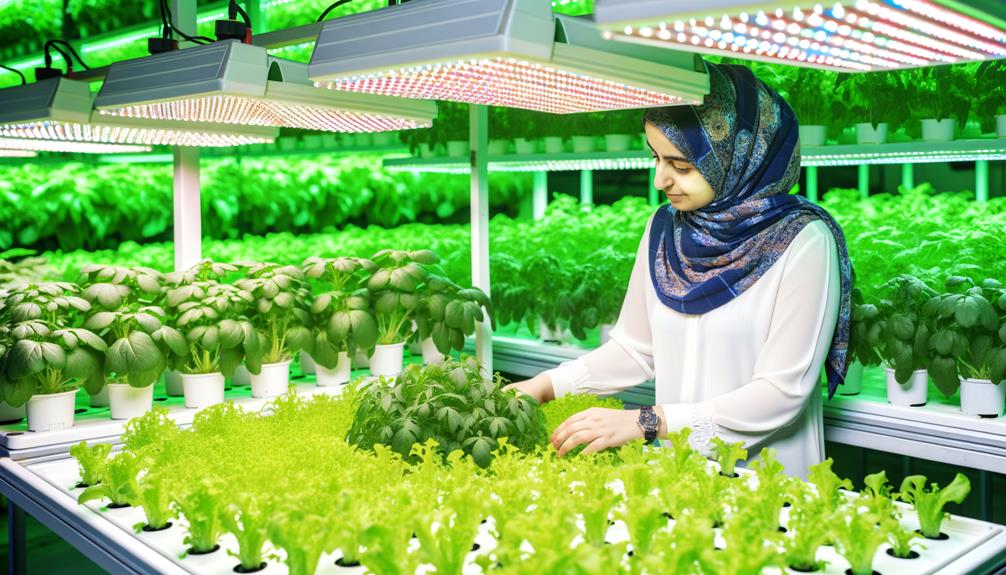
To maximize the growth of watercress in hydroponic systems, it is vital to meticulously monitor and adjust nutrient concentrations to guarantee ideal availability and absorption.
Utilizing a nutrient solution with a balanced N-P-K ratio of 20-20-20 is recommended.
Maintain an electrical conductivity (EC) between 1.0 to 1.5 mS/cm and a pH level between 6.0 and 7.0 to optimize nutrient uptake.
Confirm consistent light exposure, providing 12-16 hours of light per day with a photosynthetic photon flux density (PPFD) of 200-400 µmol/m²/s.
Regularly check for pests and diseases, as these can impede growth rates.
Conclusion
In the domain of hydroponics, the rapidity with which plants can achieve growth is akin to the swift flow of a river, reflecting the meticulous orchestration of ideal conditions.
Among the verdant contenders, leafy greens such as lettuce emerge as the champions of speed, reaching harvest readiness in a mere 30 days.
By harnessing precise nutrient solutions, controlled environments, and innovative techniques, cultivators can access the full potential of these botanical sprinters, transforming hydroponic systems into flourishing gardens of efficiency and productivity.


